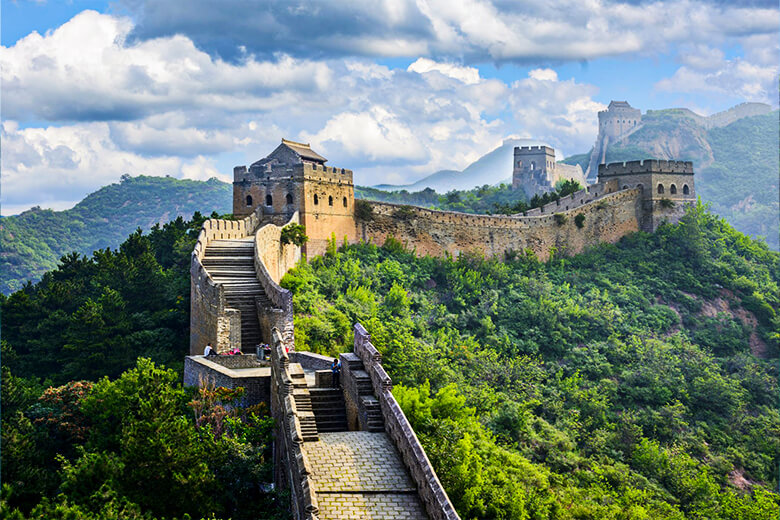
China’s climate is extremely diverse due to its wide range of latitude, longitude, and altitude. It is tropical in the extreme south, subarctic in the extreme north, and alpine in the Tibetan Plateau’s higher elevations.
The climate is dominated by monsoon winds because the ocean and the continent have different capacities for absorbing heat. Most of the country’s annual precipitation comes from the East Asian Monsoon, which brings warm, moist air from the south during the summer.
On the other hand, the winter season is dominated by the Siberian anticyclone, which brings cold and relatively dry weather. The development and retreat of the storms account to a huge degree for the planning of the stormy season all through the country.
Even though the majority of the country is in the temperate belt, the country’s climatic patterns are complex.
With a temperature of 50.5 °C on July 10, 2017, Erbao Township holds the record for China’s highest temperature. Mohe City, Heilongjiang, holds the record for China’s lowest temperature, with a temperature of 53.0 °C in January 2023.
Overview of the climate in the China
Temperature
The subarctic climate of Inner Mongolia and Heilongjiang’s northern regions features long, harsh winters and short, warm summers. On the other hand, the climate is tropical on most of Hainan Island and some of Yunnan’s extreme southern fringes. The variation in temperature between winter and summer is significant, but it is much smaller.
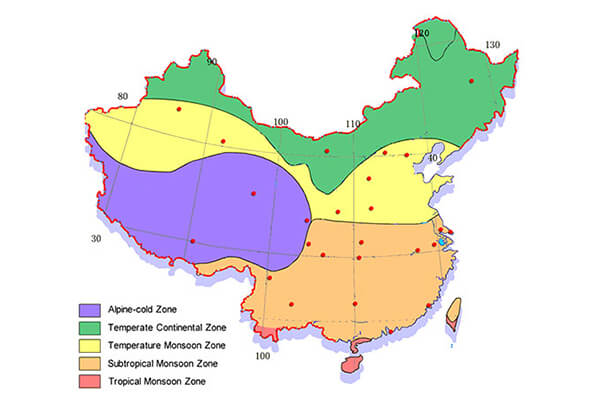
The 24-hour average temperature in Mohe County, Heilongjiang, for instance, approaches 30 °C in January and exceeds 18 °C in July. In contrast, the majority of Hainan, including the city of Haikou, experiences a mean temperature of over 18 °C in January, while the typical July temperature is around 29 °C.
The three cities of Chongqing, Wuhan, and Nanjing are sometimes referred to as the Three Furnaces This name is also used for other cities. However, the Turpan Depression, where the climate is significantly drier and temperatures frequently exceed 40 °C, records the nation’s hottest temperatures.
In addition to other mountainous regions in Northern China, permafrost can be found at high elevations in the Tian Shan and Tibetan Plateau mountains.
Precipitation
High-latitude northern winds are cold and dry in the winter, while southern winds from coastal areas at lower latitudes are warm and moist in the summer. Precipitation is quite often moved in the hotter months; however, yearly sums range from under 20 millimeters in northwestern Qinghai and the Turpan Discouragement of Xinjiang to more than 2,000 millimeters in areas of southeast China like Hong Kong and Guangdong. Toksun County, which is in the Turpan Depression, receives the least precipitation of any area in China, with an annual average rainfall of just 3.9 millimeters.
In the winter, high-pressure cells cause the Gobi Desert to be cold and dry. The noticeable seasonal variation in precipitation that defines the climate of China (and, to a large extent, East Asia) is only absent in some areas of the Dzungaria region in Xinjiang. Seasonal precipitation is controlled by the East Asian Monsoon, which changes from year to year. In the past, it was known as plum rain. Pollen and dust have been used by scientists to track their movements.
Typhoons and flooding
Hurricanes can influence China. China was hit by Typhoon Nina in 1975, and the failure of the Banqiao Dam and subsequent famines may have resulted in the deaths of up to 230,000 people. Other estimates of deaths remain under 100,000. In 2006, Hurricane Saomai became one of the most grounded tropical storms to hit China when it was landfilled in Zhejiang. China suffered extensive damage from Typhoon Haiyan in 2013, which cost the country $4.58 billion in economic losses.

One of the costliest typhoons to strike China that year was Typhoon Fitow, which caused record-breaking rainfall in several locations. It was the most expensive Chinese typhoon ever recorded, causing damage worth several billion dollars. China was damaged by Typhoon Mangkhut in 2018 for $1.99 billion. Over 12,000 temporary shelters had to be built in Zhejiang as a result of Typhoon In-fa’s record-breaking rainfall in 2021. In 2022, Muifa became the strongest typhoon to land in Shanghai.
Typhoons and heavy rainfall can flood rivers during the wet season. The 1931 floods in China are regarded as the worst natural disaster in Chinese history. Estimates of the number of people killed range from a few hundred thousand to as many as four million. Famines were brought on by the destruction of 15% of wheat and rice crops in the Yangtze Valley. In July 1931, a dike failure left nearly 800,000 people homeless in Wuhan.
For nearly three months, the city was submerged under water.269–270 The city of Nanjing was also severely affected, and Gaoyou alone saw the deaths of tens of thousands of people. The Yangtze River Floods of 1954, which killed approximately 30,000 people, and the Floods of 1998 in China, which caused significant damage and impacted 180 million people, are two other significant floods.
Sunshine
The annual amount of sunshine varies from less than 1,000 hours in Sichuan and Chongqing to more than 3,000 hours in Golmud and parts of Xinjiang and Qinghai. Additionally, there are sunny parts of Tibet, including Lhasa. The patterns of seasonal sunshine vary greatly by region, but overall, the north and Tibetan Plateau of the country are sunnier than the south. Spring is the cloudiest season in some southern Chinese cities, like Hong Kong, and autumn is the sunniest.
Environmental issues regarding China
China was ranked 120th in the Environmental Performance Index in 2020, out of 180 nations. Environmental issues have been addressed by the government, but some media outlets have criticized the actions as inadequate.
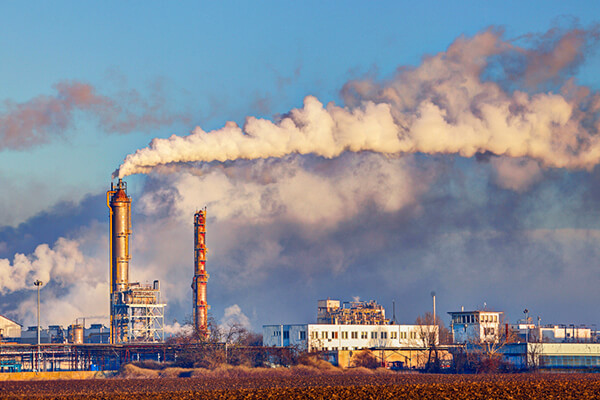
The ongoing expansion of China’s deserts, particularly the Gobi Desert, is a major problem for the environment. Although barrier tree lines planted in the 1970s have reduced the frequency of sandstorms, northern China experiences dust storms every spring due to prolonged drought and poor agricultural practices. These storms then spread to other parts of East Asia, including Japan and Korea. In 2007, SEPA, China’s environmental watchdog, stated that desertification is destroying 4,000 km2 per year.
Water quality, disintegration, and contamination control have become significant issues in China’s relations with different nations. The Himalayan region’s melting glaciers could result in water scarcity for hundreds of millions of people.
Academics contend that coal-fired electricity generation in China without carbon capture must be phased out by 2045 to limit climate change to 1.5 °C. Due to the exaggeration of production at subsidiary government levels, official government statistics regarding Chinese agricultural productivity are regarded as unreliable.
Quite a bit of China has an environment truly reasonable for farming and the nation has been the world’s biggest maker of rice, wheat, tomatoes, eggplant, grapes, watermelon, spinach, and numerous different harvests.
Climate change in the China
The Chinese economy, society, and the environment are all being significantly impacted by climate change. China’s energy infrastructure is heavily dependent on coal, making it the largest emitter of carbon dioxide. Carbon emissions are heavily influenced by other industries, such as the expanding construction industry and industrial manufacturing. However, China’s carbon emissions per capita are significantly lower than those of nations like the United States, as are those of other developing nations. It has additionally been noticed that higher-pay nations have re-appropriated discharges concentrated businesses to China.
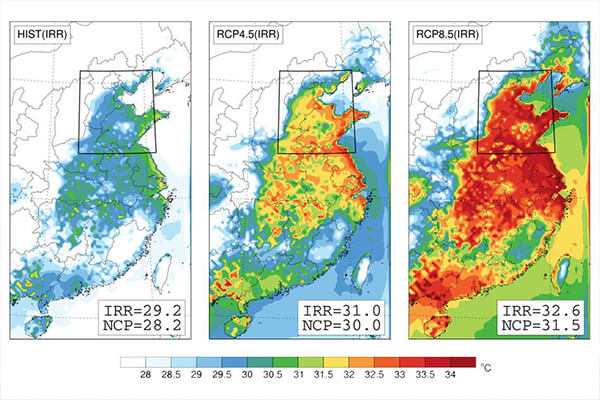
China is responsible for 13% of the world’s CO2 emissions and roughly half of the United States emissions, as measured from 1751 to 2017.
It is anticipated that China will continue to experience an increase in the negative effects of global warming on its agriculture, forestry, and water resources. China’s government is taking some steps to boost renewable energy and other decarbonization efforts. It says it will “take more vigorous policies and measures” to achieve peak emissions by 2030 and carbon neutrality by 2060.
North-east
Manchuria, in the northeastern part of China, has a very continental climate, with cold, dry winters and hot, wet summers. The summer monsoon brings warm, moist air masses from the south, while the winter monsoon brings cold air masses from nearby Siberia. The only time it rains a lot is in the summer, from June to August. May and September also see a lot of rain, but not a lot of it. In the long cold season, there isn’t much rain—or, given the temperature, snow.
The Desert
The average January temperature in Harbin, a ten-million-person metropolis, is -17 °C (1 °F). From roughly the middle of November to the middle of March, the temperature stays below freezing (32 degrees Fahrenheit) even during the day. The sky is often clear in the winter. However, because of the low temperatures, very little snow falls and does not melt, so the winter landscape is typically covered in snow.

In spring, the temperature climbs quickly, and summer is a warm season, but at the same time it’s blustery: There is a lot of rain in July, and the relative humidity is high. On the most sultry days, when it doesn’t rain, the temperature can reach 35 °C. Here is the typical amount of rain.
The temperature is from -11.5 °C in January to 25 °C in July in Shenyang, a city of eight million people further south. Also in this area, the winter is very sunny, and the summer is humid and rainy.
Summer is cooler in the northernmost part of Manchuria, near the border with Siberia; the average temperature in July falls below 20 °C. The average temperatures in Tahe show that the winters are even colder, with January temperatures approaching -30 °C on average and -50 °C at their coldest.
The desert in the China
Tibet, however, has a unique climate, and nearly half of China is arid or desert. The vast Taklamakan sand desert can be found further to the west, in the low or middle altitudes of Xinjiang and Gansu, where the desert belt begins north of Beijing, not far from the capital. It extends westward, covering almost all of Inner Mongolia, where the Chinese side of the Gobi Desert.
The temperature in Kashgar, an oasis on the ancient Silk Road at 1,300 meters (4,250 feet) above sea level, ranges from -5 degrees Celsius (23 degrees Fahrenheit) in January to 25 degrees Celsius (77 degrees Fahrenheit) in July. Despite the altitude, the days can be scorchingly hot, but the nights are typically pleasant. Only 60 millimeters (2.4 inches) of rain or snowfall each year, with a greater chance during the summer.
The Turpan Depression, which is also China’s hottest region, is the hottest. It is a small area at sea level where daytime temperatures typically hover around 39/40 °C from June to August, with peaks of 45 °C. Winter is cold here, but summer is hot. The average temperature is shown here.
Urumqi, a city of three million people at an elevation of 850 meters above sea level, is the largest city in the world that is 2,400 kilometers away from the sea. The average temperature here is between 25 °C in July and -14 °C in January; It can sometimes reach 40 °C in the summer, and it can drop to -30 °C in the winter. Precipitation is more common here than in other parts of the region because it is closer to the Tian Shan Range. However, because there isn’t enough moisture, it doesn’t fall below 300 millimeters per year.
Mountains in the China
There are numerous mountain ranges in China. Because most of them have the same climate as Tibet, we have not included them on the map. Two main zones must be distinguished among the mountainous regions: the chains in the west and southeast, both of which have much milder climates due to their southern latitude and lower altitude, making them “warm mountains.”

There are several mountain ranges along China’s western and southern borders: Pamir, Tian Shan, Karakoram, Himalaya, and Kunlun Shan are all located north of Tibet. The temperature varies with altitude and latitude.
The average temperature in Akqi, which is in the northwest and is 2,000 meters (6,500 feet) above sea level and close to the border with Kyrgyzstan, ranges from -8 degrees Celsius (18 degrees Fahrenheit) in January to 19 degrees Celsius (66 degrees Fahrenheit) in July. This demonstrates how rapidly, even at high altitudes, the Asian continent warms up in the summer.
Continental climate in the China
The climate in this central-eastern region, which includes cities like Beijing, Tianjin, Lanzhou, Baotou, and Hohhot, is similar to that of the continental United States, albeit less severe than in the northeast. The winters are very cold, with January average temperatures of -10°C to -0°C; Mongolia’s desert can produce winds laden with dust, but snowfall is uncommon. Summer is blistering and damp, and it’s the main stormy season, while in different seasons, the sun typically sparkles. Precipitation is more common near the sea, ranging from 300 to 700 millimeters per year.
Along the Yellow River to the west of Beijing are two cities at the northernmost point of this region, beyond which the desert extends: Inner Mongolia’s capital and largest city, respectively, are Baotou and Hohhot. Both are 1,000 meters above sea level and because of their altitude, they get very cold in the winter. The average temperature in January ranges around -10 °C. Summer is hot, but not as hot as Beijing, where the average temperature in July is 23.5 °C. Summer precipitation is only 300 millimeters per year, which is less than Beijing’s average of 1,000 millimeters per month in July and August. The Baotou average temperature is shown here.
The South
During the long, tropical summer, the southern part of China experiences a very mild winter with an average temperature above 10 °C in January. Yearly precipitation is somewhere in the range of 1,200 and 2,000 millimeters, with a colder time of year at least and a late spring most extreme; When the region is hit by typhoons, rainfall can occur in the form of prolonged and torrential downpours, whereas during the warm season, it typically occurs in the form of thunderstorms and showers in the afternoon or evening. There aren’t many sunny days.
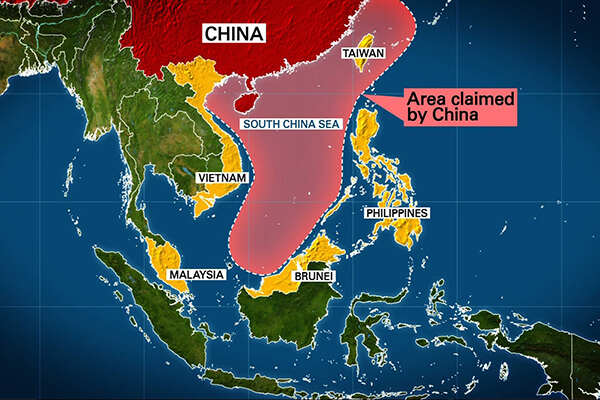
In the south, April through September is when it rains the most. In October, though it’s still warm, the rains drop dramatically. The wettest time of year at these southern latitudes is not May-June, but rather the entire long summer: From May to August, Guangzhou receives more than 230 millimeters of rain per month.



